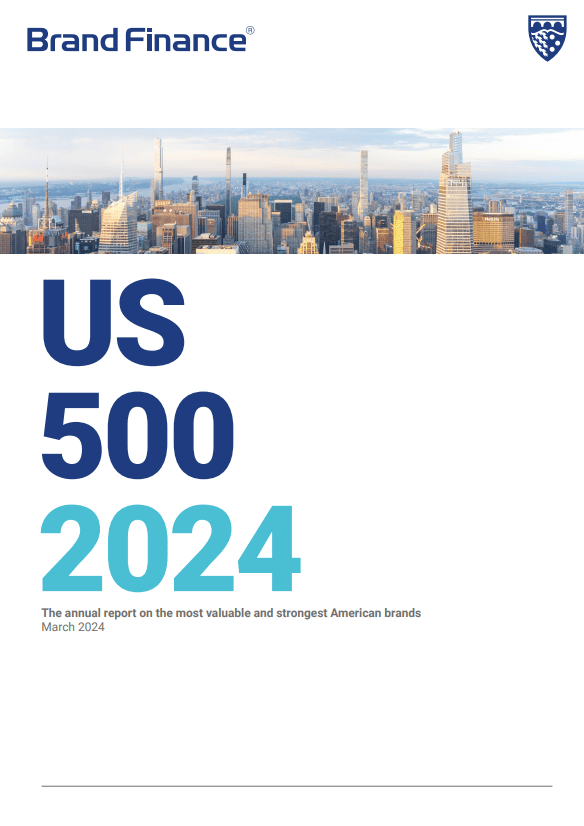Este artigo foi publicado originalmente no Finanças da marca Us 500 2024 Relatório
Stacy Janiak é vice -diretor executivo da Deloitte Global, responsável por impulsionar o desempenho na rede de US $ 65 bilhões da Deloitte de mais de 457.000 profissionais. Ela supervisiona empresas, estratégia, inovação e tecnologia, em busca de otimizar a estratégia e o impacto integrados da Deloitte no mercado. Stacy serve no Comitê Executivo Global da Deloitte e como patrocinador executivo do Escritório Global da Deloitte de IA generativa. O jogo no cenário tecnológico atual? As recentes previsões de mercado revelam que o Gen AI está pronto para ter um profundo impacto econômico global. O mercado da Gen AI deve dobrar a cada dois anos nos próximos dez anos e, finalmente, exceder US $ 200 bilhões até 2032.
Interview with Stacy Janiak

Deputy Chief
Executive Officer,
Deloitte
What role does Generative AI (Gen AI) play in the current technology landscape?
Generative AI (Gen AI) has taken center stage this year – claiming its position at the forefront of technological innovation as the driving force behind the transformation of industries. Recent market forecasts reveal that Gen AI is poised to have a profound global economic impact. The Gen AI market is expected to double every other year for the next ten years and ultimately exceed US$200 billion by 2032.
Hoje, a Gen AI está em um ponto de inflexão em que as organizações estão apenas começando a reconhecer seu potencial, mas ainda não o vi como um catalisador de crescimento para os negócios. As ferramentas e aplicações da Gen AI continuam proliferar, e começamos a testemunhar as maneiras pelas quais eles podem remodelar negócios e governo por meio de poderosos casos de uso. As ações tomadas agora devem influenciar muito como a adoção da IA da Gen se desenrola no futuro e se seus benefícios serão totalmente realizados, enquanto seus riscos são gerenciados adequadamente. As ações tomadas agora orientarão como a adoção da AI da Gen se desenrola e se seus benefícios forem totalmente realizados. A pesquisa, o estado da IA generativa na empresa: agora decide a seguir, conectado a mais de 2.800 diretor a entrevistados em nível C em seis indústrias e 16 países. No entanto, mais de três quartos deles estão antecipando que a Gen AI impulsionará a transformação substancial da organização em menos de três anos. Isso indica que os líderes têm grandes expectativas para que a Gen AI forneça vantagem competitiva, apesar de sua experiência na tecnologia ainda estar amadurecer. Com muitas empresas que desejam incorporar a Gen AI apenas em iniciativas discretas e em silêncio, e não como uma revolução sistemática em toda a sua organização, pode haver um potencial inexplorado significativo para buscar maiores oportunidades de crescimento e inovação à medida que a produtividade e a eficiência inicial são vistas. Para capitalizar totalmente o potencial da Gen AI, as organizações devem aproveitar o potencial disruptivo dessa tecnologia emergente para reinventar como eles conduzem os negócios hoje e no futuro. No entanto, os participantes da pesquisa indicaram que eram menos propensos a desenvolver ferramentas de Gen AI sob medida para atender às necessidades exclusivas de suas organizações. Com o tempo, as organizações podem evoluir para incluir ambas as abordagens para desbloquear totalmente o potencial de tudo o que a Gen Ai pode fazer para ajudar a transformar seus negócios. O sucesso com a Gen AI se baseia em uma avaliação geral de suas oportunidades e riscos e determinando como isso influencia sua estratégia de negócios. E à medida que a tecnologia evolui, a estratégia de negócios também evolui para acompanhar o ritmo da inovação. É isso que significa ser um disruptor.
What do business leaders need to think about as it relates to Gen AI adoption?
Building on its annual ‘State of AI in the Enterprise’ report, Deloitte has unveiled the first in a series of quarterly surveys which explores how actions taken now will guide how Gen AI adoption unfolds and if its benefits are fully realized. The survey, The State of Generative AI in the Enterprise: Now decides next, connected with more than 2,800 Director to C-suite level respondents across six industries and 16 countries.
Nearly half of these leaders consider themselves to have a high or very high degree of expertise when it comes to Gen AI. However, more than three-quarters of them are anticipating Gen AI will drive substantial organization transformation in less than three years. This indicates that leaders have high expectations for Gen AI to provide competitive advantage, despite the fact that their expertise in the technology is still maturing.
Industry disruptors understand that Gen AI is not just about technology, it’s about a fundamental shift in business strategy. With many companies looking to incorporate Gen AI only in discrete, siloed initiatives rather than as a systematic revolution across their organization, there may be significant untapped potential to seek larger opportunities for growth and innovation as initial productivity and efficiencies are seen. To fully capitalize on Gen AI’s potential, organizations should harness the disruptive potential of this emerging technology to reinvent how they conduct business today, and in the future.
How are organizations embracing Gen AI?
Today, the majority of organizations have a strong focus on tactical, “off-the-shelf” solutions, which can help build their Gen AI experience and offer immediate returns on efficiency and productivity. However, survey respondents indicated they were less likely to develop bespoke Gen AI tools to address needs unique to their organizations. Over time, organizations may want to evolve to include both approaches to fully unlock the potential of all that Gen AI can do to help transform their business.
On the other hand, organizations that want to fully embrace AI should approach their transformation with a holistic and integrated business strategy, incorporating Gen AI strategies and solutions throughout the fabric of the company. Success with Gen AI rests on an overall assessment of its opportunities and risks and determining how that influences your business strategy. And as technology evolves, business strategy also evolves to keep at the pace of innovation. This is what it means to be a disruptor.
Abraçar a estratégia de um disruptor significa colaborar dentro e fora de suas funções e limites organizacionais. De uma perspectiva interna, isso significa ir além da tecnologia e se estender por todas as partes do negócio, por exemplo, talento, operações e riscos. De uma perspectiva externa, trata -se de adotar a inovação colaborativa, juntamente com os ecossistemas, agências governamentais e colegas do setor da Aliança. É vital explorar o uso do Gen AI para coisas que se pensavam não poderiam ser feitas antes. Isso deve permitir que as organizações resolvam os problemas existentes enquanto se diferenciam de seus concorrentes. Para ter sucesso, as organizações devem se concentrar no impacto humano, priorizando o treinamento e o resgate e identificando um caminho para reinvestir o tempo economizado por meio de melhorias de eficiência. De fato, a falta de talento e habilidade técnico é o principal desafio que retém as organizações. Há mais trabalho a ser feito, pois menos da metade dos entrevistados concorda que eles estão educando suficientemente seus funcionários sobre as capacidades, benefícios e valor da Gen AI. Espera -se que os seres humanos prosperem nesse ambiente e serão críticos para garantir que os riscos sejam abordados e mitigados ao longo do caminho. Esses riscos exigem maior colaboração além dos limites organizacionais. Uma abordagem proativa e robusta para riscos e governança é essencial para proteger os negócios. Não se trata de definir regras, é a elaboração de uma visão que se alinha aos valores da sua empresa e identificando riscos e lacunas potenciais nas capacidades e validando esse desempenho. Ao dar essa etapa crítica, uma estrutura pode ajudar a proteger os negócios e estabelecer confiança e fornecer uma base para que o Gen AI floresça. Antecipando proativamente os possíveis desafios e tomar medidas ativas para melhorar a confiança e a confiança na tecnologia deve fornecer uma abordagem equilibrada que ajude a permitir que uma organização gerencie os riscos da inovação da Gen AI com as recompensas. Excrevando esse equilíbrio deve criar confiança em todo o tecido da sua organização. Ai
In addition, disruptors should move beyond business as usual in order to leverage Gen AI for strategic advantage and innovation. It is vital to explore using Gen AI for things that were thought couldn’t be done before. This should enable organizations to solve existing problems while differentiating themselves from their competitors.

How should organizations ensure a humancentric approach to Gen AI implementation?
As Gen AI opens up new ways of working, it consequentially has potential for massive implications for talent—altering how we work, learn, and collaborate. To be successful, organizations should focus on the human impact, by prioritizing training and reskilling and identifying a path to reinvesting the time saved through efficiency improvements.
Many organizations surveyed indicate that they are less prepared when it comes to challenges related to Gen AI and talent. In fact, a lack of technical talent and skills is the top challenge holding organizations back. There is more work to be done as less than half of those surveyed agree they are sufficiently educating their employees on the capabilities, benefits, and value of Gen AI.
Importantly, we must not lose sight of the fact that some of the most productive uses of Gen AI will not be about replacing people but instead will be about augmenting people’s skills to enhance productivity, knowledge, and creativity. Humans are expected to thrive in this environment and will be critical to ensuring that risks are addressed and mitigated along the way.
What proactive steps should an organization take to anticipate potential challenges and improve trust and confidence in Gen AI?
While Gen AI has unleashed new ways of working and transforming enterprises, it has also exposed new potential risks. These risks call for increased collaboration beyond organizational boundaries.
Only a quarter of those surveyed believe their organizations are highly or very highly prepared to address governance and risk issues related to Gen AI adoption. A proactive and robust approach to risk and governance is essential in safeguarding the business.
While the regulatory landscape continues to evolve, a robust governance framework is the cornerstone of a successful Gen AI integration. This isn’t about setting rules, it‘s about crafting a vision that aligns with your business’ values and pinpointing potential risks and gaps in capabilities, then validating that performance. By taking this critical step, a framework can both help safeguard the business and establish confidence and provide a foundation for Gen AI to flourish. Proactively anticipating potential challenges and taking active steps to improve trust and confidence in the technology should provide a balanced approach that helps enable an organization to manage the risks of Gen AI innovation with the rewards. Striking this balance should create trust across the fabric of your organization.
